 |
 |
 |
| |
Maintenance peginterferon (pegIFN) therapy to prevent hepatocellular carcinoma (HCC) in patients with advanced chronic hepatitis C:
extended follow - up results from the HALT - C Trial
|
| |
| |
Reported by Jules Levin
AASLD Nov 2 2010 Boston
A.S.Lok1; J.E.Everhart2; E.C.Wright2; T.R.Morgan3; A.M.Di Bisceglie4; H.Kim5
1. Division of Gastroenterology, University of Michigan Medical Center, Ann Arbor, MI; 2. NIDDK, NIH, Bethesda, MD; 3. VA Med Ctr, Long Beach, CA; 4. Saint Louis Univ, Saint Louis, MO; 5. NERI, Watertown, MA
Background: IFN has been reported to decrease the incidence of HCC in pts with CHC. Earlier reports of the HALT-C trial found that maintenance pegIFN did not reduce clinical outcomes during the first 4 yr but the follow-up may have been too short to observe a chemopreventive effect on HCC. Aim: To determine whether pegIFN decreased the incidence of HCC in the HALT-C cohort with longer follow-up. Methods: 1050 pts with CHC and Ishak fibrosis >/= 3, who failed to achieve SVR after pegIFN and ribavirin therapy, were randomized to receive pegIFN 90 ug/wk x 3.5 yrs or no treatment. Pts were followed q 3 mos x 3.5 yrs then q 6 mos until the end of the study.
Results: After a median follow-up of 6.1 yrs (max 8.7), 88 (68 definite and 20 presumed) pts met predefined criteria of HCC: 37/515 (7.2%) pegIFN-treated and 51/533 (9.6%) control pts (p=0.24). PegIFN was associated with a significantly lower incidence of HCC among pts with cirrhosis at baseline but not those with fibrosis; cumulative incidence at 8 yrs was 11% vs. 24.2%, HR 0.45 (95% CI 0.24-0.83, p=0.01) for pts with cirrhosis, and 10.1% vs. 9.8%; HR 1.44 (95% CI 0.77-2.69, p=0.26) for those with fibrosis. Among pts with cirrhosis at baseline, the cumulative rate of HCC in the two treatment groups did not diverge until after yr 4. A beneficial effect of pegIFN among pts with cirrhosis at baseline persisted when presumed HCC cases were excluded and when the analysis was limited to pts at risk after yr 4. Treated pts who had a decrease in histologic activity index (HAI) by >/=2 points on follow-up biopsy had a lower incidence of HCC than those with unchanged or increase in HAI: 2.9% vs. 9.4% (p=0.03).
Conclusions: Extended follow-up of the HALT-C cohort showed a modest benefit of long-term pegIFN in decreasing the incidence of HCC. This effect was mainly observed in pts with established cirrhosis and took several yrs to become apparent.
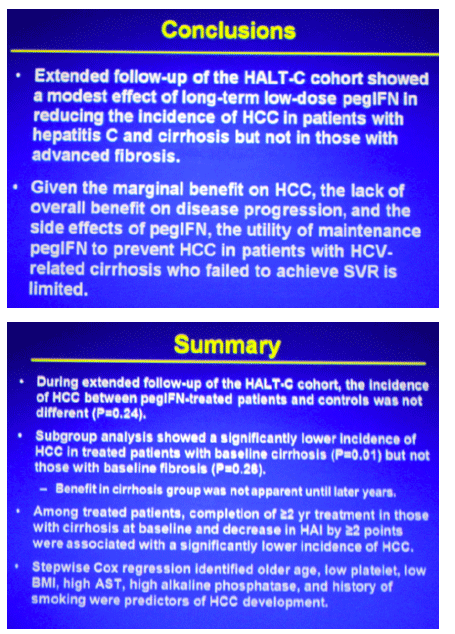
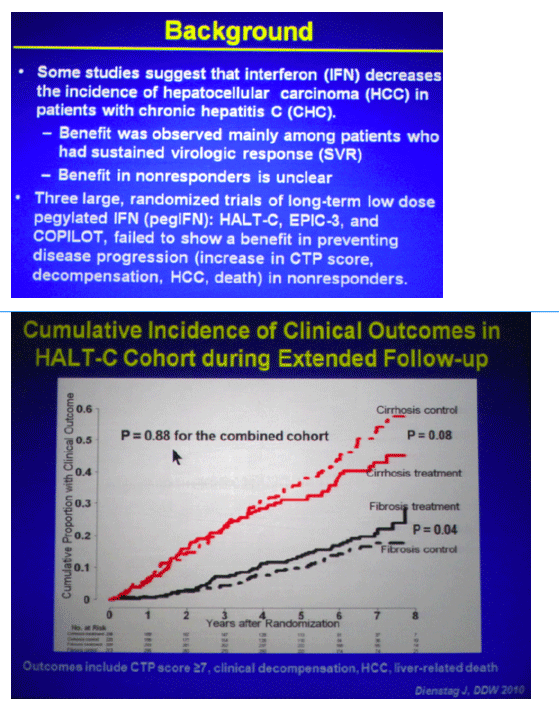
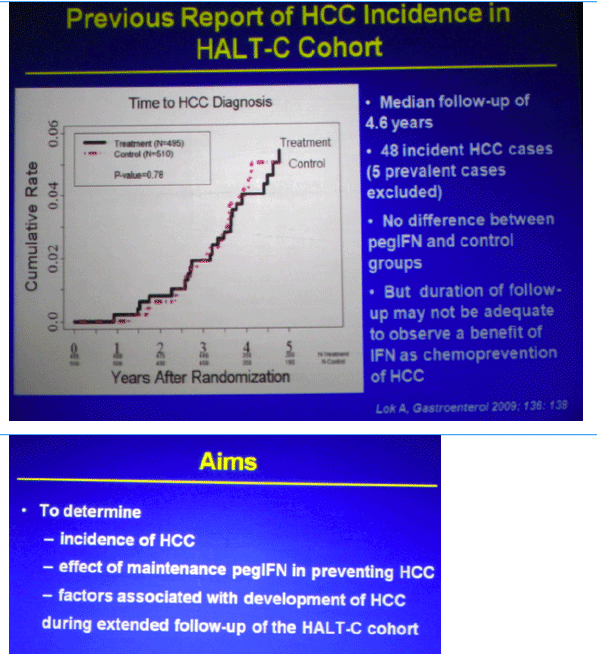
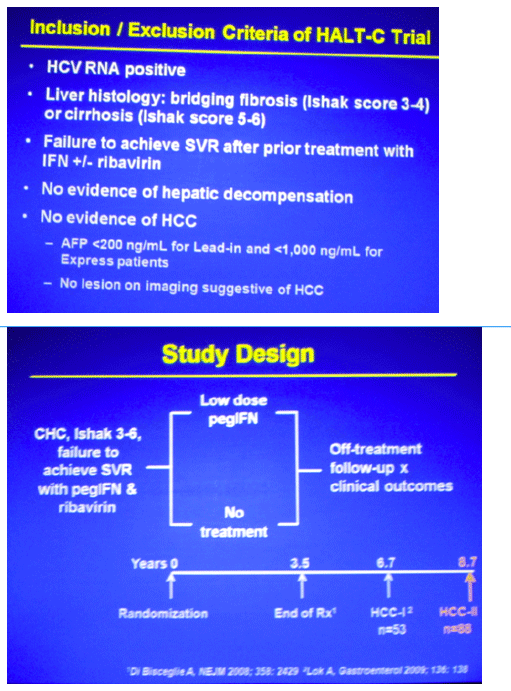

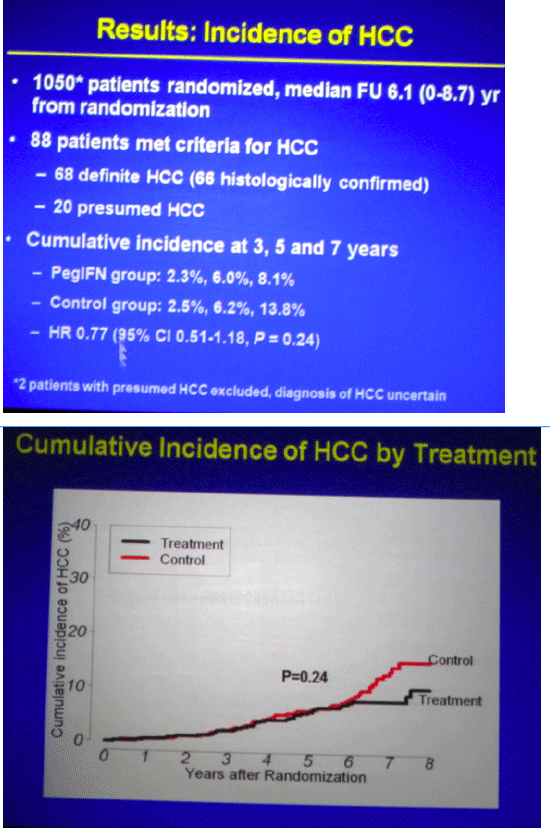
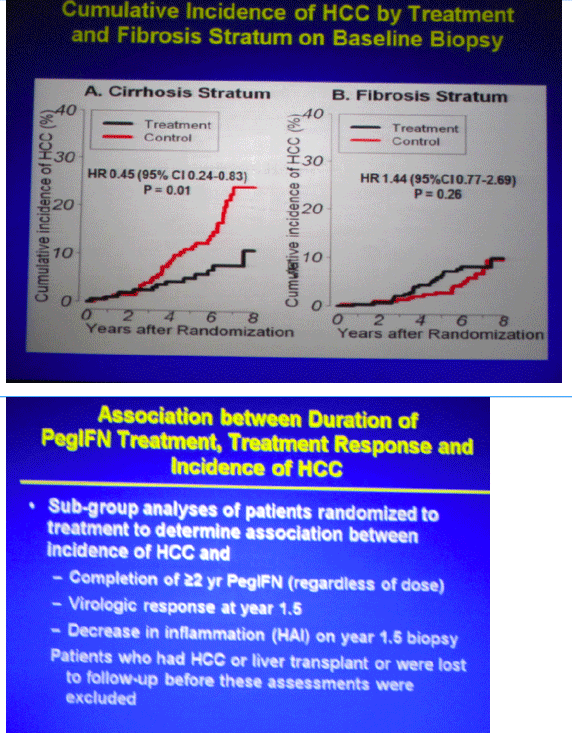
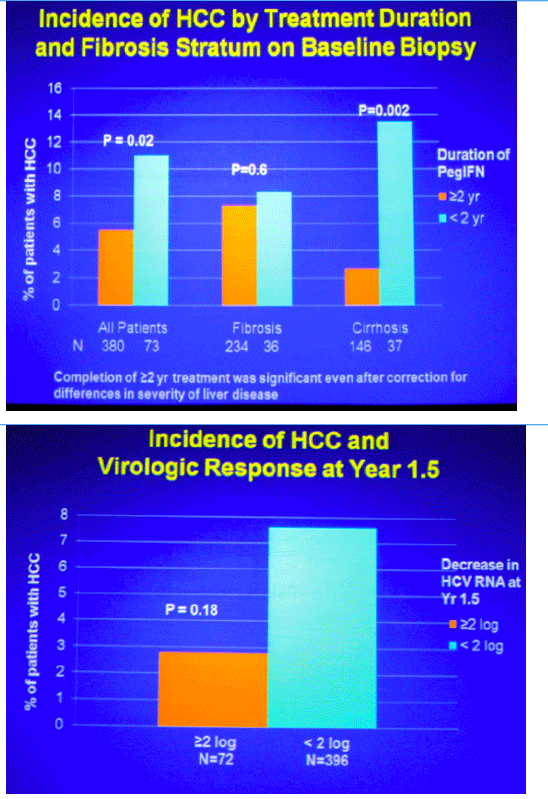
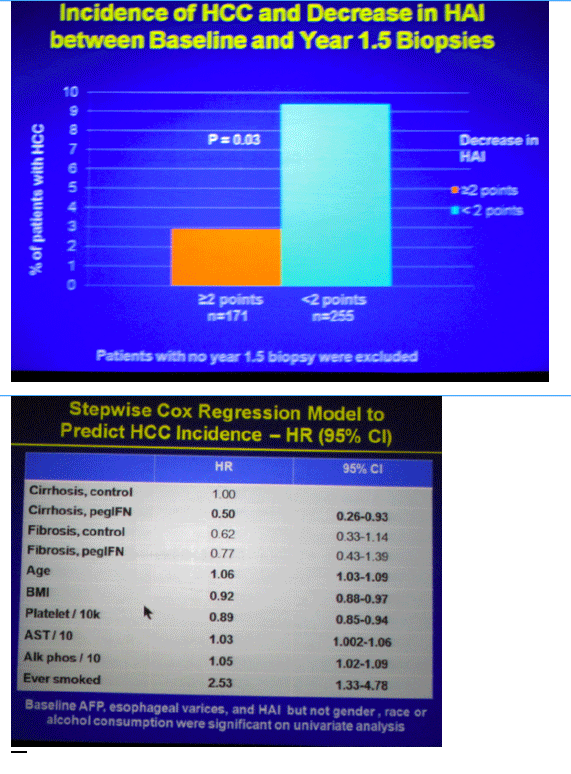
|
| |
|
 |
 |
|
|